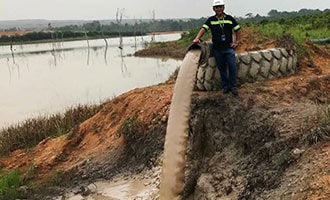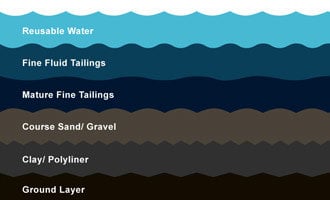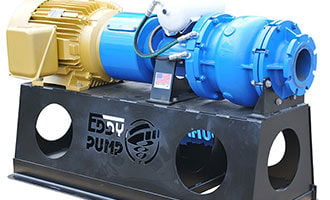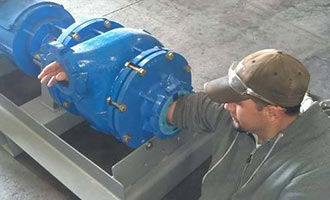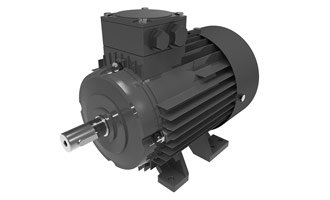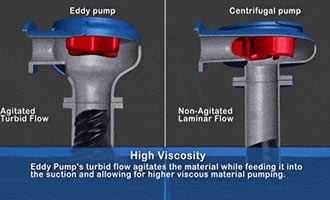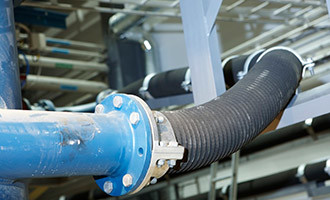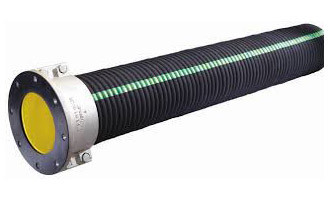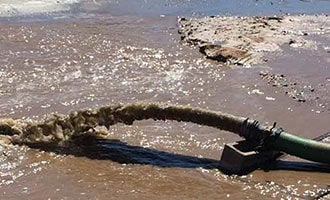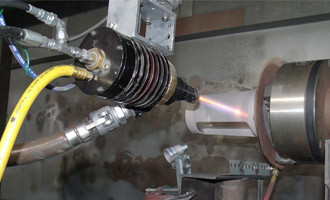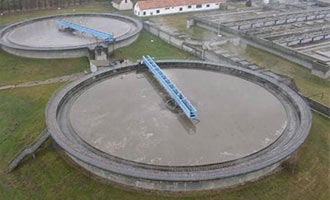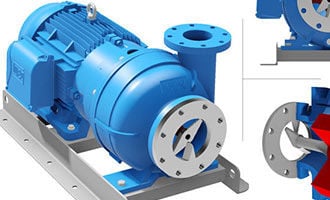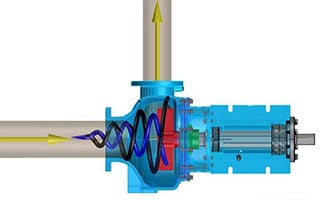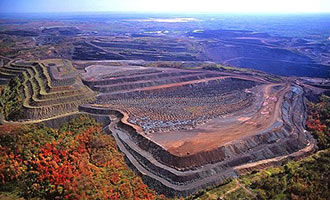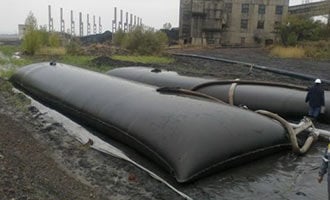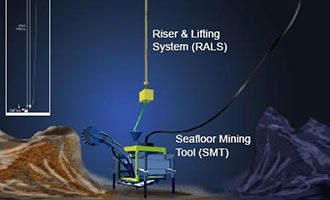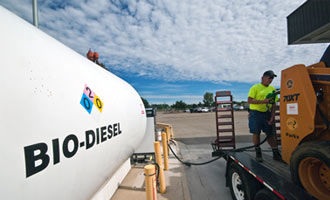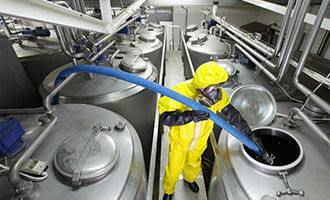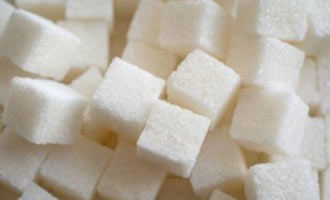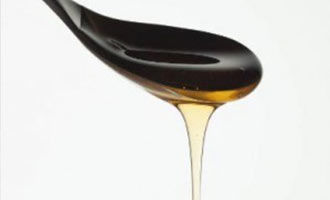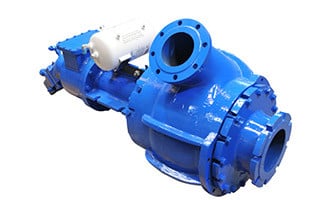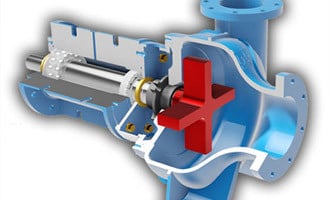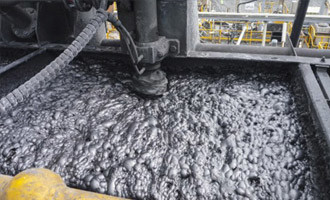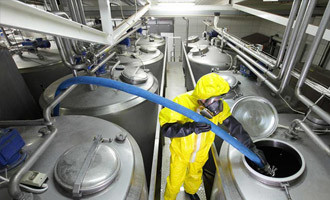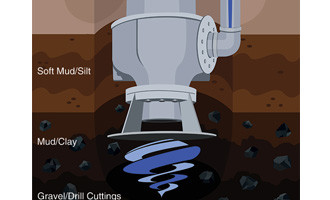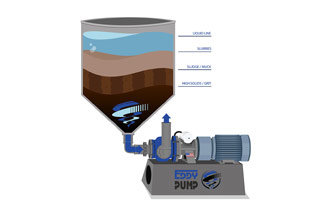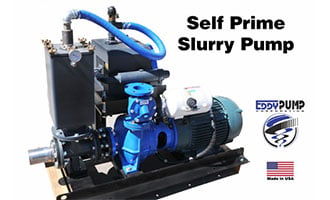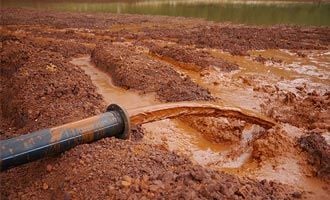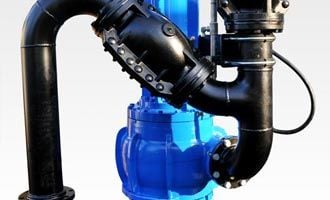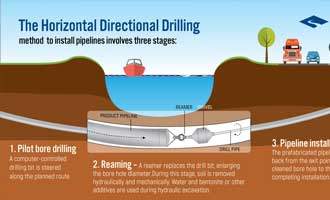How to Reduce Pipe Friction Loss on an Industrial Pump
Most people only associate pumps to moving fluids from one place to another. Although this type of application is typical in the pump industry, there are a lot of other ways pumps can be applied. Browse Our Slurry PumpsContact Us For a Fast QuoteThis Article Includes
- What is Pipe Friction Loss?
- How Pipe Friction Loss Can be Reduced on an Industrial Pump Application?
- Benefits of Reducing Pipe Friction Loss
- The EDDY Pump – A Pump with an Attitude!

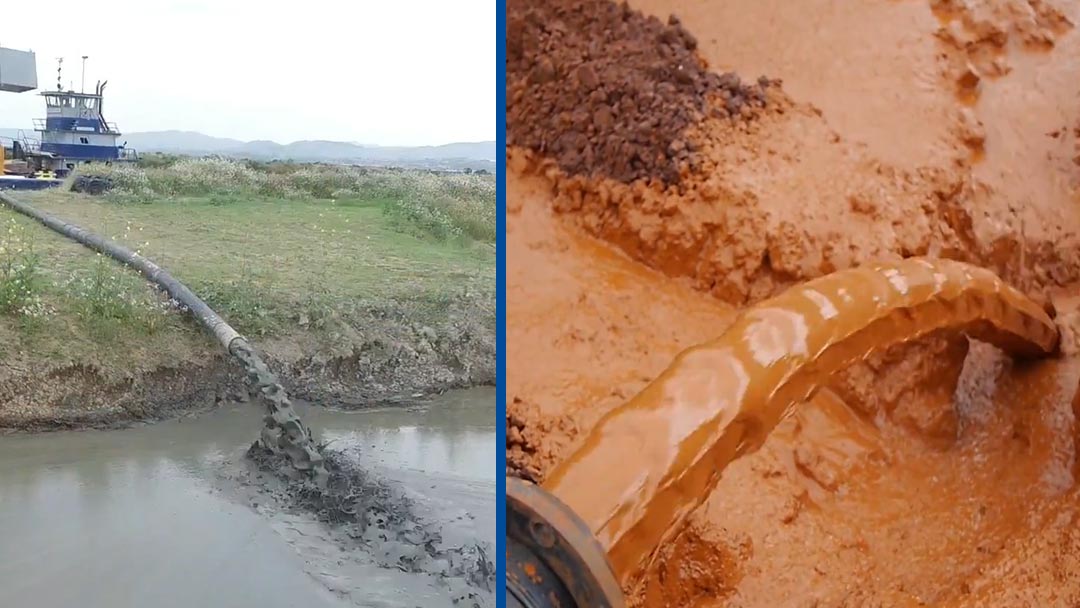
What is Pipe Friction Loss?
Pipe friction loss is inherent in fluid transfer and is a result of the movement of the fluid through a pump, pumping system, and the piping and pipe components. As the fluid moves through the system, there is friction that occurs between the fluid and the walls of the piping and pipe components. A fluid’s viscosity also referred to as the “thickness” of fluid, refers to how easily a fluid can flow and is a primary factor that can increase pipe friction loss.
As the fluid’s viscosity increases it creates more friction inside the pipe. This friction is what is referred to as friction energy loss. In a highly viscous fluid, the molecules are cohesively bonded together which impacts the fluid’s ability to flow easily. These two points, the fluid coming into contact with the inner walls of the piping, and the cohesively bonded molecules in highly viscous fluids result in a greater amount of energy required to pump the fluid through the piping.
Another factor that increases friction energy loss is the surface finish at the inner walls of the piping. The rougher the surface finish, the greater the friction energy loss. Along with surface finish, pipe fittings, valves, pipe reducers, bends, and other pipe components can also increase friction energy loss. As the fluid moves through the piping and goes through a pipe fitting turbulence occurs; this turbulence further creates an increase in pipe friction loss.
Pipe diameter is another important factor; the smaller the diameter of the pipe the greater the ratio of inside pipe surface area to the fluid. Each and every pipe component that is added to the piping has the potential of increasing the pipe friction energy loss.
Two other very important factors regarding pipe friction energy loss when using an industrial pump are flow rate and length of piping. The longer the piping and higher the flow rate needed will result in an increase in pipe friction energy loss. The following formula is used to calculate how severe the friction energy loss is given a specific flow rate and length of pipe.
Friction loss = friction loss coefficient * flow rate / 1002 * hose length / 100.
Equation: Friction loss = C (Q/100)2 *L/100.
In this equation, Q equals the flow rate, and L is the length of the hose or pipe. You’ll notice that after Q gets divided by 100, it is then squared—or raised to the second power, which worsens the effect on the energy loss of the fluid.
The following is an example to further explain how flow rate affects pipe friction energy loss. If one fluid that moves through a pipe at a rate of 2 feet per second and another fluid moves through a pipe at double the speed or 4 feet per second. Even though the flow velocity is doubled, the effect on friction is far greater. This is because two raised to the second power is four, while four raised to the second power is 16. Therefore, the impact on friction increases 8-fold when the flow rate is doubled.
Going back to the equation for friction loss, the value is multiplied by “L” which is the variable representing pipe length; the greater the pipe length increases pipe friction energy loss and the more energy that is required to move the fluid through the piping.

How Pipe Friction Loss Can be Reduced on an Industrial Pump Application?
Now that we have gone through what pipe friction loss is, we can delve deeper into this subject and take a look at how pipeline friction loss can be reduced on an industrial pump application. For this next section, it is important to keep in mind that it is better to take these considerations into account prior to constructing the pumping system that is built around the industrial pump chosen for the application.
There are a number of ways to reduce the amount of energy that is lost. The goal of building a pumping system is to maximize the energy that is transferred from the pump to the fluid, as the fluid is pumped through the piping. The following are a number of things that can be done to lessen the amount of energy that is lost to friction:
- Shorten the pipe length to reduce the L (length) value in the friction loss equation mentioned in the previous section of this article. In doing this, you will reduce the surface area which will decrease the energy loss.
- Increase the pipe diameter; this will reduce the fluid ratio per total area of the inside diameter of the pipe. This will also reduce the friction energy loss.
- Construct the pumping system using fewer pipe fittings and components if possible. Also, use 45-degree turns instead of 90-degree turns so the sharper turns are more gradual. Doing this will result in less turbulence caused by the pipe fittings and reduce the friction energy loss.
- When selecting piping make sure the inside surface finish is smoother and avoid any rough finish on the inside diameter of the pipe. This will reduce the friction energy loss as the fluid moves against the inner wall of the pipe.

Benefits of Reducing Pipe Friction Loss
Reducing pipe friction loss can amount to industrial pumps using less energy to pump fluids, which can save a company thousands of dollars over the course of the pump’s life cycle. Reducing pipe friction loss can also decrease the stress that an industrial pump undergoes in an application. This can increase the life of an industrial pump, which in turn reduces the need for purchasing replacement parts due to stress failures, and avoids pump downtime. The following is a summary of the items to consider when constructing a pump system, and can drastically reduce the potential for pipe friction. Considering the many benefits of reducing pipe friction loss, it is worth the time and effort of applying the following guidelines.
- Wider pipe diameters
- Shorter pipes
- Fewer fittings, tees, valves, elbows, and similar pipe components
- More gradual turns as opposed to 90-degree elbows
- Pipes with smoother walls
The EDDY Pump – A Pump with an Attitude!
The EDDY Pump Corporation is a leading provider of unique, extremely durable, and tough slurry and dredge pumps, and manufactures products that provide superior value versus other pump types. The pump is not a centrifugal, vortex, or positive displacement pump, but rather a pump harnessing the fluid dynamics of an eddy current. This enables the EDDY pump to outperform conventional pumps in applications that involve high viscosity, large weight of solids and particulates, high specific gravity, corrosive and abrasive material, work well in applications that are susceptible to clogging, and do it in an environmentally friendly manner.
EDDY Pump Product Categories
- Industrial Heavy-Duty Process Pumps
- Self Priming Pumps (Electric & Diesel)
- Dredging Equipment
- Excavator Pump Attachment
- Dredge Sled
- Autonomous Dredge
- Cable Deployed Dredge
- Hydraulic Power Units (HPU)
If you are pumping slurry, brines, high solids, extremely viscous material, paste, high abrasives (sand & gravel) and material filled with solids, then you found the best-suited pump for the job. Go to: https://eddypump.com/ or Call Us!
Mining, Fly Ash, Coal Ash, Oil, Fracking, Gas, Wastewater, Pulp and Paper, Chemical, Energy, Water Municipalities, Irrigation, and Dredging Companies. For Access to Complete Product Line Go to: https://eddypump.com/products/
Related Products
HD (Heavy Duty) Slurry Pumps
Pumping Viscous Red Mud – Highlights
This video shows how EDDY Pump performs when pumping high-solid red mud or bauxite which is abrasive, highly viscous, and corrosive.
Why EDDY Pumps Are Better - Highlights
This video shows how EDDY Pump transports high slurry and abrasive materials. Featured dredge pump equipment includes the Remote Operated Subdredge, Diver Operated Pump and a Excavator Attachment Dredge Pump.




